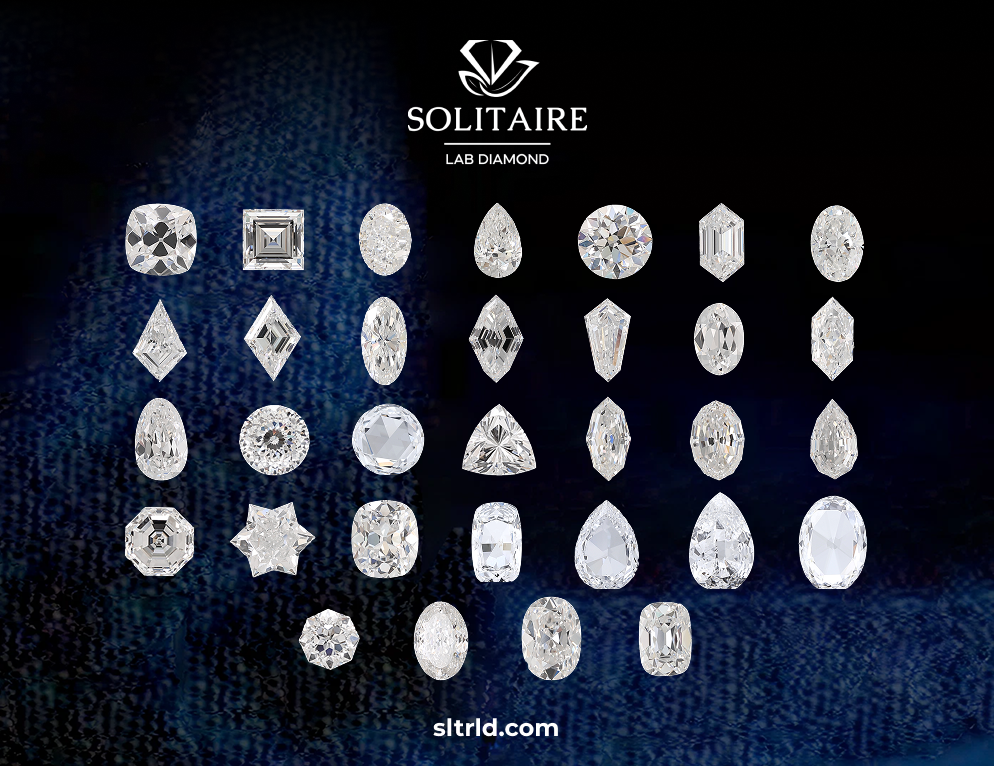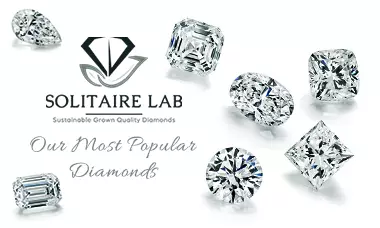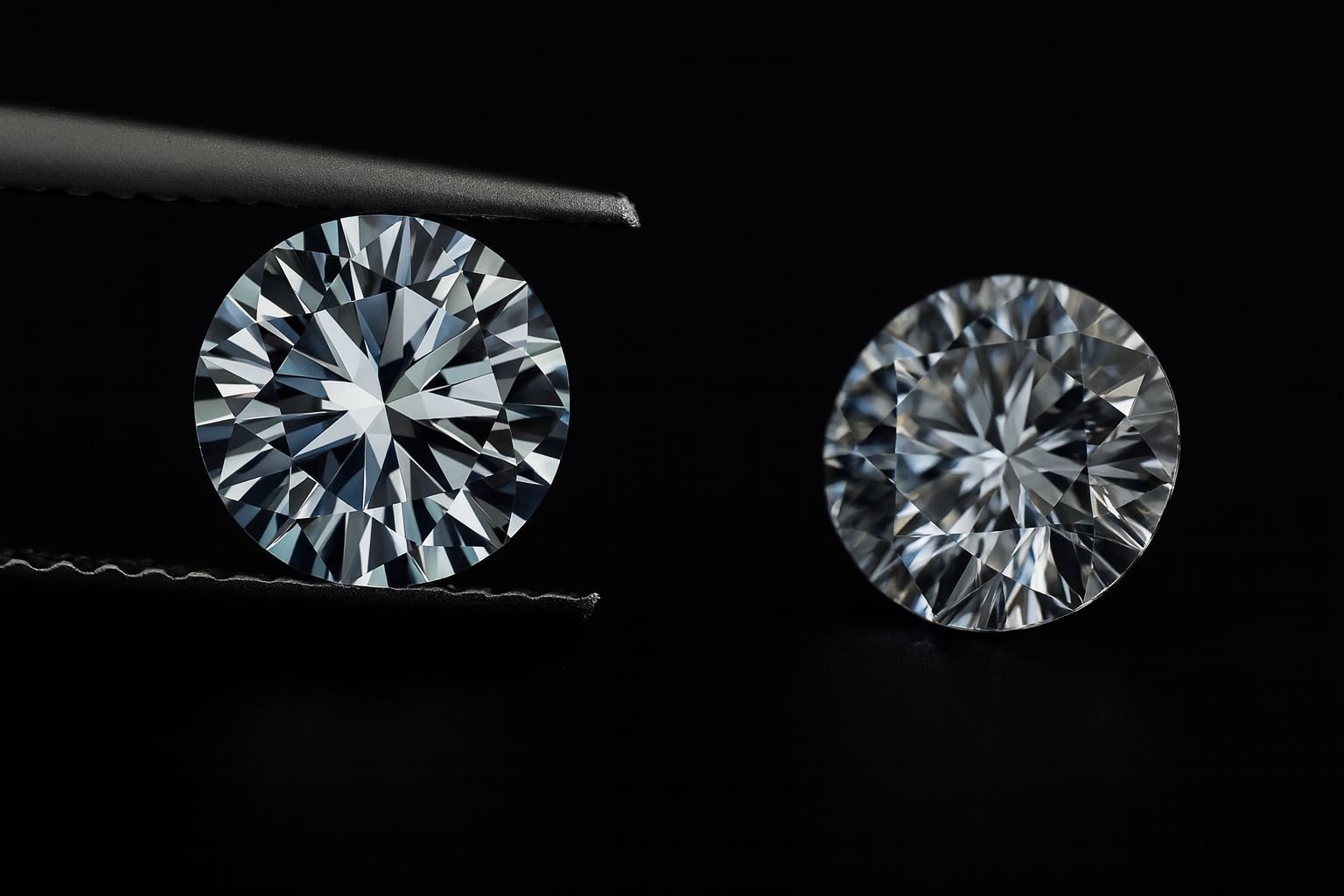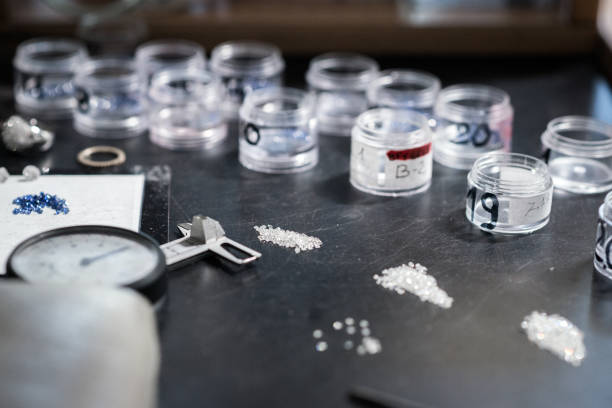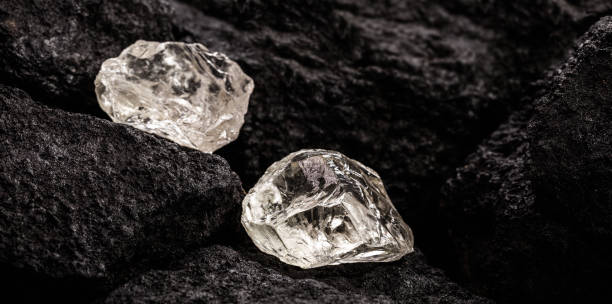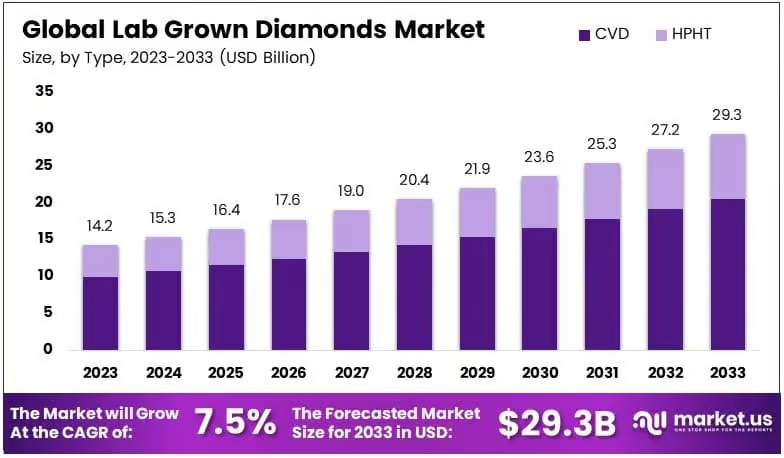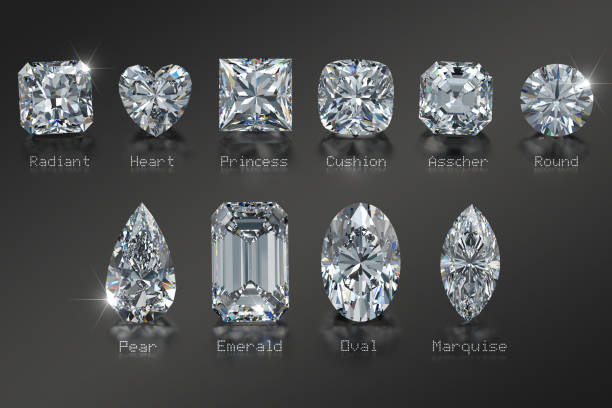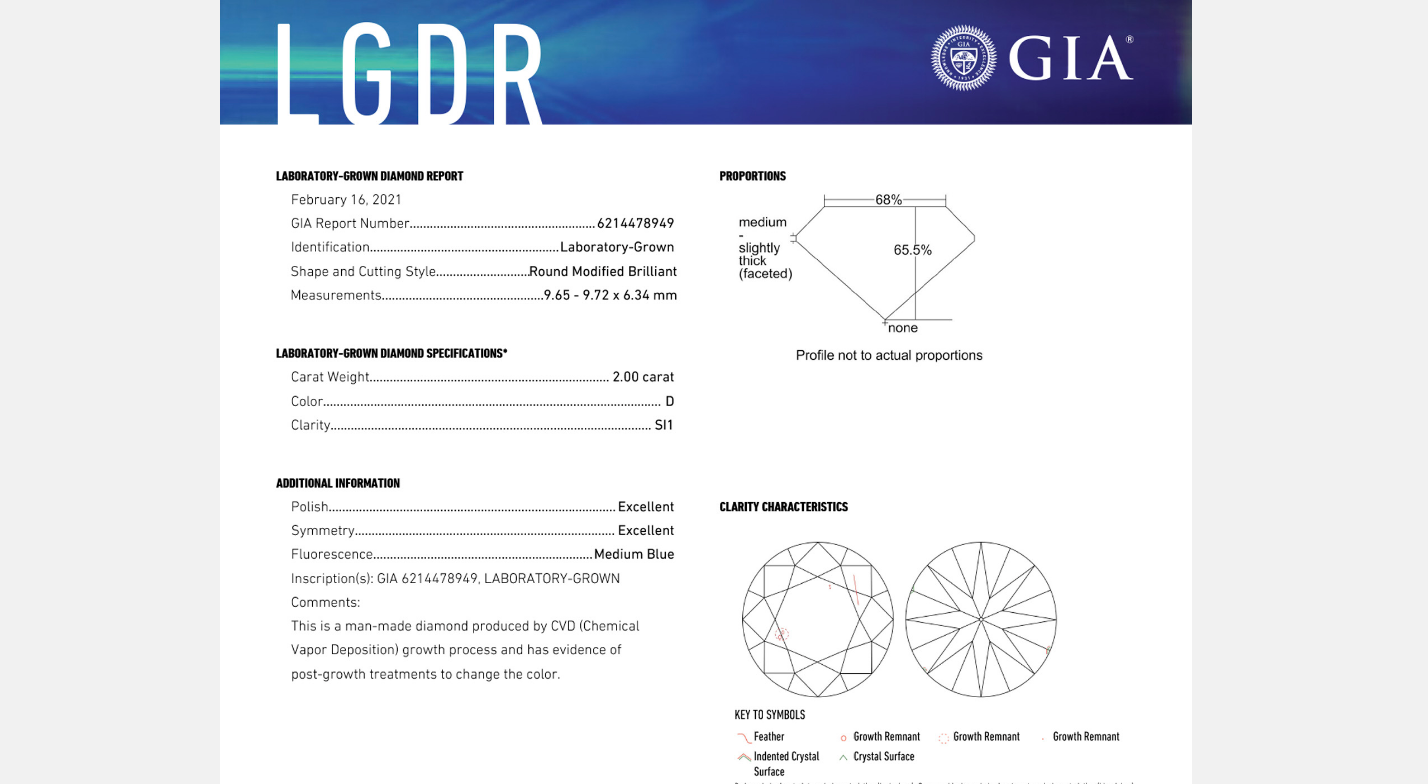The diamond industry is experiencing a fundamental shift that's reshaping how jewelry retailers, wholesalers, and designers approach their sourcing strategies. The choice between lab-grown and natural diamonds isn't just about product preference anymore; it's about business margins, supply chain reliability, customer expectations, and staying competitive in an evolving marketplace.
For diamond merchants in today's market, understanding the practical differences between these two diamond types is crucial for making informed decisions that impact everything from inventory management to profit margins.
At Solitaire Lab Diamond, we've seen firsthand how this knowledge transforms our partners' operations, from improved margins to enhanced customer satisfaction.
This comprehensive guide is designed specifically for trade professionals who need practical insights, not just surface-level information.
Let's explore what these differences mean for your business.
What are Lab-Grown Diamonds?
Lab-grown diamonds are real diamonds created in controlled laboratory environments using two primary methods: High Pressure High Temperature (HPHT) and Chemical Vapor Deposition (CVD). These processes replicate the natural diamond formation conditions, producing gems that are chemically, physically, and optically identical to their mined counterparts.
These diamonds possess identical chemical, physical, and optical properties to natural diamonds; they're pure carbon arranged in the same crystal structure.
The key advantage for businesses is predictability. Unlike natural diamond mining, lab-grown production can be scaled and controlled to meet specific market demands.
What are Natural Diamonds?
Natural diamonds form deep within the Earth's mantle over billions of years under extreme pressure and temperature conditions. They're extracted through mining operations worldwide, making their supply subject to geological limitations, political factors, and environmental regulations.
For wholesale buyers, this translates to less predictable inventory and pricing fluctuations based on mining outputs and global market conditions.
Learn more about the science behind lab-grown diamonds in our comprehensive guide: About Lab Grown Diamonds (Everything You Need To Know)
Key Differences: Lab-Grown vs. Natural Diamonds
Understanding the practical differences between lab-grown and natural diamonds is essential for making informed inventory decisions. This comparison focuses on the factors that directly impact your business operations, from supply chain reliability to customer perception.
|
Aspect |
Lab-Grown Diamonds |
Natural Diamonds |
|
Origin |
Created in labs by HPHT/CVD methods |
Formed naturally, mined from earth |
|
Physical/Chemical |
Essentially identical to natural diamonds |
Pure carbon; same composition as lab-grown |
|
Environmental Impact |
Significantly lower—reduced land and water use, less CO₂ emission |
Mining-intensive, higher environmental footprint |
|
Supply Chain |
Transparent, traceable, conflict-free |
Risk of conflict gems, complex supply chains |
|
Customization |
High customization options available: sizes, shapes, and qualities can be tailored |
Limited customizable by nature; less consistent for large orders |
|
Pricing Stability |
More stable, 60-80% less than natural equivalents |
Variable pricing, often higher due to rarity (and influenced by supply disruptions and market speculation) |
|
Market Acceptance |
Rapidly increasing, especially with millennial and Gen Z clients |
Established prestige, some segments prefer tradition |
|
Certifications |
Recognized by IGI, GIA, and other major gemological labs |
Same certifications available |
|
Inventory Scalability |
Easy to scale for large orders and custom specifications |
Limited by mining output and market availability |
The most significant advantage lies in supply chain reliability. When you're planning inventory for the next quarter or fulfilling a large custom order, lab-grown diamonds offer the consistency that natural diamonds simply can't match. This reliability translates directly to better business planning and improved customer satisfaction.
Supply Chain Reliability: Lab-grown diamonds offer unprecedented predictability for inventory planning. Production can be scaled to meet demand, eliminating the supply uncertainties that have historically challenged diamond retailers.
Margin Opportunities: The cost advantage of lab-grown diamonds allows retailers to maintain healthy margins while offering competitive prices to end consumers, particularly important in today's price-conscious market.
Quality Consistency: Laboratory conditions ensure consistent quality parameters, reducing the variability that can complicate inventory management and customer expectations.
Market Trends & Industry Insights
The wholesale diamond market is experiencing unprecedented change. According to Market.us research, lab-grown diamonds market size is expected to be worth around USD 29.3 billion by 2033, from USD 14.2 billion in 2023, growing at a CAGR of 7.5% during the forecast period from 2024 to 2033.
For diamond merchants, this isn't just a trend – it's a fundamental shift in consumer expectations and business opportunities.
Key Market Indicators
- Retail Demand Growth: Lab-grown diamond sales in the bridal segment have grown by 80% year-over-year
- Price Advantage: Wholesale buyers report 60-70% better margins on lab-grown diamonds
- Sustainability Focus: 73% of millennials and Gen Z consumers actively seek sustainable jewelry options
- Regulatory Acceptance: Major gemological institutes now provide full certification for lab-grown diamonds
Global Market Dynamics
The regulatory landscape has shifted dramatically in favor of lab-grown diamonds. Major gemological institutes, including the GIA and IGI, now provide comprehensive certification and grading services for lab-grown diamonds, establishing industry-standard practices that ensure consumer confidence. Major markets including the US, EU, and Asia now recognize lab-grown diamonds with full disclosure requirements, creating a level playing field for retailers and wholesalers.
According to the Responsible Jewellery Council, this regulatory clarity has opened doors for diamond businesses who previously hesitated due to uncertainty about customer acceptance and legal requirements.
Top Advantages of Lab-Grown Diamonds
Predictable Large-Scale Inventory
At Solitaire Lab Diamond, we maintain access to over 2,500 styles with consistent availability. Unlike natural diamonds, where specific cuts and qualities may become scarce without warning, lab-grown diamonds can be produced to meet your exact specifications and delivery timelines.
Real Business Impact: One of our wholesale partners recently needed 200 identical 1-carat round brilliants for a corporate jewelry line. With natural diamonds, this order would have taken months to fulfill and required compromises on quality consistency. We delivered the complete order within three weeks, all with matching certifications.
Cost and Margin Implications
The mathematics are straightforward: lab-grown diamonds offer 60-80% cost savings compared to natural diamonds, while selling at prices that maintain healthy margins for retailers. This pricing advantage doesn't compromise quality – it reflects the efficiency of controlled production versus the costs of mining, transportation, and market speculation.
Sustainability: Meeting Modern Expectations
Today's consumers, particularly younger demographics, actively research the origins of their purchases. According to Forbes on jewelry industry trends, lab-grown diamonds provide a clear sustainability story that resonates with environmentally conscious buyers. For retailers, this indicates easier sales conversations and reduced customer objections.
Customization and Control
Lab-grown diamond production allows for greater customization possibilities. Need specific color grades? Particular size ranges? Custom cuts for a signature collection? Lab-grown diamonds offer flexibility that natural diamond sourcing simply cannot match.
Ready to explore custom options? Check out our guide: How to choose and buy best Lab Grown Diamonds in NYC at best price?
Addressing Industry Concerns & Debunking Myths
Despite growing market acceptance, some lingering misconceptions about lab-grown diamonds persist in the industry. Let’s check them out to stay updated with facts.
"Are lab-grown diamonds real diamonds?"
Yes, absolutely.
According to the GIA, lab-grown diamonds are chemically, physically, and optically identical to natural diamonds. They pass all traditional diamond tests, receive the same certifications from recognized gemological institutes, and possess the same hardness, brilliance, and fire as natural diamonds.
The Federal Trade Commission (FTC) and other regulatory bodies worldwide have confirmed that lab-grown diamonds are genuine diamonds, requiring only proper disclosure of their origin.
"What about resale value?"
While natural diamonds have historically held resale value better, this advantage is diminishing as lab-grown diamonds gain market acceptance. More importantly for businesses, the focus should be on retail margins and customer satisfaction rather than resale value – metrics where lab-grown diamonds consistently outperform.
"Do they come with proper certifications?"
Yes, absolutely. Both the IGI and GIA provide full certifications for lab-grown diamonds, including detailed reports on cut, color, clarity, and carat weight. These certifications carry the same authority and recognition as those for natural diamonds.
Here’s how the certificate would look:
Source: GIA’s sample report
"Will customers accept them?"
Market research consistently shows growing consumer acceptance of lab-grown diamonds, particularly among younger demographics and environmentally conscious buyers. Many customers appreciate the transparency and value proposition when properly educated about the product.
Why Solitaire Lab Diamond is Your Ideal Wholesale Partner?
When choosing a lab-grown diamond supplier, partnership quality makes the difference between success and frustration. Solitaire Lab Diamond offers:
Unmatched Inventory Access
Our global sourcing network spans the US and India, giving us access to over 2,500 distinct styles and specifications. Whether you need classic round brilliants or specialty cuts like trillion cut diamonds, we maintain consistent inventory levels that support your business growth.
B2B-Focused Pricing Structure
We understand wholesale margins matter. Our pricing structure is designed specifically for trade buyers, offering competitive rates that allow healthy retail markups while remaining attractive to end consumers.
Quality Assurance and Supply Chain Control
Every diamond in our inventory undergoes rigorous quality control processes. Our direct relationships with producers mean shorter supply chains, better quality consistency, and more reliable delivery schedules for your business.
Full Certification Support
We provide complete certification documentation from recognized gemological institutes, ensuring your customers receive the same level of confidence they expect from traditional diamond purchases.
Scalability for Growing Businesses
Whether you're ordering 10 pieces or 1,000, our systems and supply chains are designed to scale with your business needs. We've successfully supported clients ranging from boutique jewelers to major retail chains.
Explore our complete inventory: Lab Grown diamond collection by shape
Making the Strategic Choice for Your Business
The lab-grown versus natural diamond decision ultimately comes down to business strategy. A recent article from JCK Magazine indicates that retailers who have successfully integrated lab-grown diamonds report stronger performance across key business metrics.
If your priorities include predictable supply chains, improved margins, sustainability positioning, and the ability to scale operations efficiently, lab-grown diamonds offer clear advantages.
Key takeaways for businesses:
- Lab-grown diamonds offer superior supply chain predictability and cost advantages
- Quality and certification standards match natural diamonds
- Market acceptance continues to grow, particularly among target demographics
- Environmental credentials align with increasing consumer and corporate sustainability priorities
- Profit margin opportunities exceed traditional natural diamond sourcing
The competitive advantage goes to businesses that can offer customers choice, value, and transparency that lab-grown diamonds deliver consistently.
At Solitaire Lab Diamond, we've built our entire operation around supporting retail diamond merchants who recognize these market realities. Our clients consistently report improved inventory turnover, better customer satisfaction, and stronger profit margins after incorporating lab-grown diamonds into their product mix.
Whether you're looking to diversify your inventory, improve your margins, or meet customer demand for sustainable options, lab-grown diamonds deserve serious consideration in your sourcing strategy.
Contact us today for a personalized wholesale consultation and discover how lab-grown diamonds can strengthen your competitive position.
Get in touch with our team for exclusive wholesale pricing and inventory access.
